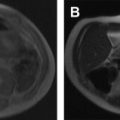
The evaluation of the small bowel using conventional endoscopy and radiology is challenging due to its length and caliper. Over the past several years, the use of cross-sectional imaging techniques for suspected small-bowel disorders has increased. Cross-sectional techniques allow visualization of the entire bowel and detection of extraluminal pathologic conditions. Given the fact that most groups of pathologies in the bowel have transmural involvement and cannot be evaluated by endoscopy, this represented another key factor in understanding the implementation of the technique in clinical practice. Due to the increasing awareness of radiation exposure, there has been a more global interest in implementing MR imaging that either reduce or eliminate radiation exposure. This is especially important in patients with chronic diseases such as inflammatory bowel disease, who may require multiple studies over a lifetime, or in studies that require sequential imaging time points such as the assessment of gastrointestinal motility. Besides this, MR imaging has many properties that make it well suited to imaging of the bowel, especially the improved tissue contrast. The intra- and extraluminal MR findings, combined with T2-weighted, contrast enhancement and functional information, help make an accurate diagnosis and consequently characterize bowel diseases.
As with the small bowel, MR imaging evaluation of the colon and the rectum has also undergone significant advances over the past decade. The one-stop shop concept has led to the evaluation of the colon together with the small bowel in the assessment of IBD, thus avoiding the need for colonoscopies in a select group of patients. MR colonography has also emerged as an alternative tool to colonoscopy for both the screening and the diagnosis of colorectal cancer. The use of MR imaging for rectal cancer staging has evolved rapidly in recent years and currently represents part of the standard of care. Finally, the current status of MR imaging in the diagnosis and classification of perianal fistula representing critical data for obtaining a surgical map and the role of MR imaging in fistula follow-up after medical treatment are also reviewed.
As guest editor of this issue of Magnetic Resonance Imaging Clinics of North America , I was fortunate enough to enlist contributions from a number of distinguished abdominal and gastrointestinal radiologists, as well as from younger investigators with experience in the field of bowel imagery. My intention was to cover all aspects of MR imaging of the bowel in detail. Some overlap was inescapable, although it perhaps provides differing points of view. I express my gratitude to all the authors for their generous contributions in sharing their cutting-edge knowledge and expertise in the different topics. I am sure that this issue will become a valuable tool for radiologists as well as clinicians who are aware of the impact of MR imaging on their management of patients.
Stay updated, free articles. Join our Telegram channel

Full access? Get Clinical Tree





